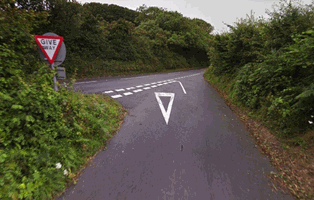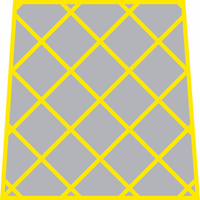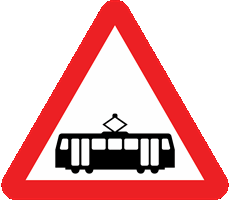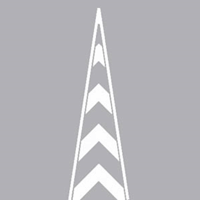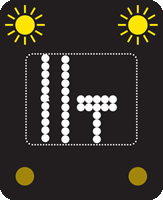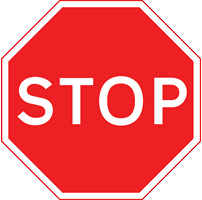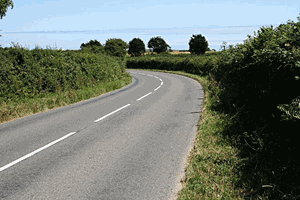This mock driving theory test consists of 50 questions.
You need 43 out of 50 (86%) to pass. You have a time limit of 57 minutes.
Read more about the theory test and how it works.
There are no tests related to this category :
There are no tests related to this category :
Quick view of test questions. Click question box to reveal correct answer.
Correct Answer: A
Explanation: When a driver or rider follows the vehicle in front of them too closely, it is referred to as 'tailgating.' It's unsafe because it limits their view of the road ahead. It leaves no room for error if the vehicle in front of them unexpectedly slows down or stops. Tailgating is often the primary cause of rear-end accidents and pile-ups.
Explanation: When a driver or rider follows the vehicle in front of them too closely, it is referred to as 'tailgating.' It's unsafe because it limits their view of the road ahead. It leaves no room for error if the vehicle in front of them unexpectedly slows down or stops. Tailgating is often the primary cause of rear-end accidents and pile-ups.
2. Which of the following hazards should the driver of the grey car be most wary of?
Mark one answer
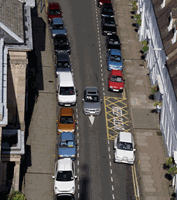
B
C
D
Correct Answer: C
Explanation: There is always a risk when passing parked cars that a car door will open and a person will step out onto the road. You should drive defensively, keeping your speed low, looking for this and other hazards as you pass.
Explanation: There is always a risk when passing parked cars that a car door will open and a person will step out onto the road. You should drive defensively, keeping your speed low, looking for this and other hazards as you pass.
Correct Answer: B
Explanation: The building means you don't have a good view of the road, and vehicles on the road don't have a good view of you. Creep forward slowly until you can see properly, and if you aren't certain that it's clear, don't pull out.
Explanation: The building means you don't have a good view of the road, and vehicles on the road don't have a good view of you. Creep forward slowly until you can see properly, and if you aren't certain that it's clear, don't pull out.
Correct Answer: B
Explanation: You must stop if signalled to by a school crossing patrol. Don't get impatient and rev your engine or wave anyone across the road.
Explanation: You must stop if signalled to by a school crossing patrol. Don't get impatient and rev your engine or wave anyone across the road.
Correct Answer: C
Explanation: Elderly pedestrians may have difficulty walking, hearing, seeing, concentrating, and making judgements. They can take longer to cross roads. Be patient.
Explanation: Elderly pedestrians may have difficulty walking, hearing, seeing, concentrating, and making judgements. They can take longer to cross roads. Be patient.
6. What should you do if a lorry approaching a turning indicates left but moves right?
Mark one answer

B
C
D
Correct Answer: B
Explanation: Long vehicles need plenty of space to navigate around tight corners or junctions. In turning left, they may first swing right, and vice versa. Leave them plenty of space and don't attempt to pass them. What looks like a gap as you approach the turning will soon close as the lorry turns.
Explanation: Long vehicles need plenty of space to navigate around tight corners or junctions. In turning left, they may first swing right, and vice versa. Leave them plenty of space and don't attempt to pass them. What looks like a gap as you approach the turning will soon close as the lorry turns.
7. On a motorway, why might it be better to use an emergency roadside telephone rather than a mobile phone?
Mark one answer
AB
C
D
Correct Answer: A
Explanation: Using an emergency telephone enables the emergency services to find you more easily. Arrow markers indicate the location of roadside emergency telephones, and the phone operator will be able to pinpoint your location by tracing the call. If calling from a mobile phone, have the number on the nearest marker post to hand; this will let the phone operator identify where you are.
Explanation: Using an emergency telephone enables the emergency services to find you more easily. Arrow markers indicate the location of roadside emergency telephones, and the phone operator will be able to pinpoint your location by tracing the call. If calling from a mobile phone, have the number on the nearest marker post to hand; this will let the phone operator identify where you are.
Correct Answer: B
Explanation: Different coloured reflective studs are fixed to the road at the edges of motorways and between lanes. Amber studs indicate the right-hand edge of the carriageway, bordering the central reservation. Use reflective studs to identify which lane you're in in the dark.
Explanation: Different coloured reflective studs are fixed to the road at the edges of motorways and between lanes. Amber studs indicate the right-hand edge of the carriageway, bordering the central reservation. Use reflective studs to identify which lane you're in in the dark.
9. For cars and motorcycles on a dual carriageway, what is the national speed limit?
Mark one answer
AB
C
D
Correct Answer: D
Explanation: The national speed limit for motorcycles and cars is 70 mph on motorways and dual carriageways, and 60 mph on single carriageways. Different types of vehicles have different national speed limits, and are laid out in The Highway Code. Always ensure you know the speed limits for the road you're on and the vehicle you're driving.
Explanation: The national speed limit for motorcycles and cars is 70 mph on motorways and dual carriageways, and 60 mph on single carriageways. Different types of vehicles have different national speed limits, and are laid out in The Highway Code. Always ensure you know the speed limits for the road you're on and the vehicle you're driving.
Correct Answer: A
Explanation: Unless otherwise stated, any road with street lights has a 30 mph speed limit.
Explanation: Unless otherwise stated, any road with street lights has a 30 mph speed limit.
Correct Answer: C
Explanation: In most scenarios, you shouldn't enter a yellow box junction if your exit isn't clear. The one exception to this is if you're turning right but your way is blocked by oncoming traffic or other vehicles turning right. Yellow box junctions are designed to keep traffic flowing through the junction at busy times.
Explanation: In most scenarios, you shouldn't enter a yellow box junction if your exit isn't clear. The one exception to this is if you're turning right but your way is blocked by oncoming traffic or other vehicles turning right. Yellow box junctions are designed to keep traffic flowing through the junction at busy times.
Correct Answer: C
Explanation: This sign indicates there is a tram crossing ahead. Trams move quickly and quietly, and cannot steer to avoid obstacles. For these reasons and others, you should take extra care in a road system that accommodates trams. Pay attention to signage, signals, and tram rails.
Explanation: This sign indicates there is a tram crossing ahead. Trams move quickly and quietly, and cannot steer to avoid obstacles. For these reasons and others, you should take extra care in a road system that accommodates trams. Pay attention to signage, signals, and tram rails.
Correct Answer: D
Explanation: You'll see these markings on motorway slip roads, and should only enter them in the event of an emergency. This is the case for any area marked with chevrons and bordered with a solid white line.
Explanation: You'll see these markings on motorway slip roads, and should only enter them in the event of an emergency. This is the case for any area marked with chevrons and bordered with a solid white line.
Correct Answer: B
Explanation: This sign indicates that the right lane is closing ahead, and that the left and centre lanes remain open. If you're in the right lane, you should merge safely into the centre lane well ahead of the closure. If traffic is moving slowly enough, it's recommended that traffic takes turns merging into one lane.
Explanation: This sign indicates that the right lane is closing ahead, and that the left and centre lanes remain open. If you're in the right lane, you should merge safely into the centre lane well ahead of the closure. If traffic is moving slowly enough, it's recommended that traffic takes turns merging into one lane.
Correct Answer: C
Explanation: In the event that a disabled driver can't walk to an emergency phone following a breakdown, the best course of action is for them to stay in their vehicle, turn on their hazard warning lights, and await help. The 'help' pennant indicates when a disabled driver needs assistance.
Explanation: In the event that a disabled driver can't walk to an emergency phone following a breakdown, the best course of action is for them to stay in their vehicle, turn on their hazard warning lights, and await help. The 'help' pennant indicates when a disabled driver needs assistance.
16. You are turning right in busy traffic. You're already indicating. What could you do to confirm your intention?
Mark one answer
AB
C
D
Correct Answer: B
Explanation: You might choose to signal with your arm if you suspect other road users can't see your indicators properly. Learn the arm signals shown in The Highway Code, so you know which to use at any given time.
Explanation: You might choose to signal with your arm if you suspect other road users can't see your indicators properly. Learn the arm signals shown in The Highway Code, so you know which to use at any given time.
17. You're driving on a three-lane motorway. If studs to your left are red, and studs on your right are white, which lane are you in?
Mark one answer
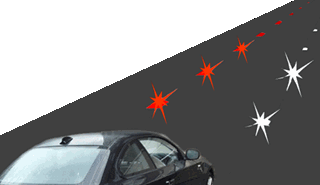
B
C
D
Correct Answer: B
Explanation: Red studs are found between the hard shoulder and the edge of the carriageway, while white studs are found between lanes. Seeing red on your left and white on your right tells you you're in the left lane. Remember that green studs indicate a slip road, and amber indicates the central reservation. Bright yellow/green indicates roadworks.
Explanation: Red studs are found between the hard shoulder and the edge of the carriageway, while white studs are found between lanes. Seeing red on your left and white on your right tells you you're in the left lane. Remember that green studs indicate a slip road, and amber indicates the central reservation. Bright yellow/green indicates roadworks.
18. On a road with speed humps, what should you do if the driver ahead is travelling slower than you'd like?
Mark one answer
AB
C
D
Correct Answer: C
Explanation: You should continue behind them patiently, as it's not wise to overtake in areas with traffic-calming measures. Overtaking here would likely make your exceed the speed limit, which is exactly what traffic-calming measures seek to discourage.
Explanation: You should continue behind them patiently, as it's not wise to overtake in areas with traffic-calming measures. Overtaking here would likely make your exceed the speed limit, which is exactly what traffic-calming measures seek to discourage.
Correct Answer: B
Explanation: Check first that your battery needs top-ups (some modern batteries don't). If it does, make sure every battery cell's plates are covered by fluid.
Explanation: Check first that your battery needs top-ups (some modern batteries don't). If it does, make sure every battery cell's plates are covered by fluid.
20. What should you do when approaching a crossroads where the traffic lights have failed?
Mark one answer
AB
C
D
Correct Answer: D
Explanation: You should treat this situation as you would an unmarked junction. Stop for any traffic already passing through, then continue when you're sure it is safe.
Explanation: You should treat this situation as you would an unmarked junction. Stop for any traffic already passing through, then continue when you're sure it is safe.
21. You are in slow-moving traffic. What action should you take if the driver behind you is too close?
Mark one answer
AB
C
D
Correct Answer: D
Explanation: Drivers following too closely increases the risk of collision, as there's less time for them to brake if you suddenly need to stop. The best thing to do is slow down, increasing the gap in front of you. Doing this lessens the odds that you'll have to stop suddenly, giving you more space to brake in case of a hazard. This is an example of defensive driving.
Explanation: Drivers following too closely increases the risk of collision, as there's less time for them to brake if you suddenly need to stop. The best thing to do is slow down, increasing the gap in front of you. Doing this lessens the odds that you'll have to stop suddenly, giving you more space to brake in case of a hazard. This is an example of defensive driving.
Correct Answer: D
Explanation: The green light indicates that regular traffic can continue if it is safe to do so, while the white line tells trams to stop. Even if there are no trams where you normally drive, you should be familiar with signals applying to trams, as they're being introduced in more and more places.
Explanation: The green light indicates that regular traffic can continue if it is safe to do so, while the white line tells trams to stop. Even if there are no trams where you normally drive, you should be familiar with signals applying to trams, as they're being introduced in more and more places.
Correct Answer: B
Explanation: This sign indicates that you need to stop even if the road looks clear. You find signs like this at junctions with reduced visibility or a heavy flow of traffic. Look around for hazards, creep forward to improve visibility, and only emerge when you're sure it's safe to do so.
Explanation: This sign indicates that you need to stop even if the road looks clear. You find signs like this at junctions with reduced visibility or a heavy flow of traffic. Look around for hazards, creep forward to improve visibility, and only emerge when you're sure it's safe to do so.
Correct Answer: D
Explanation: Use maps (paper or online) to plan your journey, including a good number of rest stops. Knowing your route takes some of the stress out of driving, making for an easier ride, and can reduce congestion. Write out the route if needs be to help you remember it.
Explanation: Use maps (paper or online) to plan your journey, including a good number of rest stops. Knowing your route takes some of the stress out of driving, making for an easier ride, and can reduce congestion. Write out the route if needs be to help you remember it.
A
B
C
D
B
C
D
Correct Answer: C
Explanation: Shock can be tricky to diagnose following a collision. Look out for pale, grey skin, sweating, a rapid pulse, and rapid, shallow breathing.
Explanation: Shock can be tricky to diagnose following a collision. Look out for pale, grey skin, sweating, a rapid pulse, and rapid, shallow breathing.
Correct Answer: C
Explanation: Road tax (also known as vehicle excise duty) can be renewed online or by phone, at the post office, or at vehicle registration offices. You'll need your renewal reminder notice, and may need your MOT certificate.
Explanation: Road tax (also known as vehicle excise duty) can be renewed online or by phone, at the post office, or at vehicle registration offices. You'll need your renewal reminder notice, and may need your MOT certificate.
Correct Answer: C
Explanation: The typical braking distance is the distance required to brake to a stop from a given speed. In reality, you'll also need time to think. Thinking distance plus braking distance is referred to as 'overall stopping distance'. At 50 mph, braking distance is 38 metres and thinking distance is 15 metres, giving a total of 53 metres. This will also be affected by how much attention you're paying, the nature of hazards ahead, and road conditions.
Explanation: The typical braking distance is the distance required to brake to a stop from a given speed. In reality, you'll also need time to think. Thinking distance plus braking distance is referred to as 'overall stopping distance'. At 50 mph, braking distance is 38 metres and thinking distance is 15 metres, giving a total of 53 metres. This will also be affected by how much attention you're paying, the nature of hazards ahead, and road conditions.
Correct Answer: A
Explanation: Following a collision resulting in injury or damage, police officers might ask to see your insurance details and driving licence. If you don't have this with you, you can present it at a police station at a later date.
Explanation: Following a collision resulting in injury or damage, police officers might ask to see your insurance details and driving licence. If you don't have this with you, you can present it at a police station at a later date.
29. In a queue of traffic, why is it important to check your right mirror before turning right into a side road?
Mark one answer
AB
C
D
Correct Answer: B
Explanation: You should check your side mirrors in case someone is overtaking. Cyclists and motorcyclists often filter through traffic and therefore appear quickly, so be sure to check there's no one passing you before you turn.
Explanation: You should check your side mirrors in case someone is overtaking. Cyclists and motorcyclists often filter through traffic and therefore appear quickly, so be sure to check there's no one passing you before you turn.
30. You are at a pelican crossing and the amber light is flashing. What should you do?
Mark one answer
AB
C
D
Correct Answer: A
Explanation: You should wait for any pedestrians currently crossing to finish before you continue forward. Elderly pedestrians, young children, and those with certain disabilities may take longer to cross. Be patient, don't rev your engine, and don't go forward until they've finished crossing.
Explanation: You should wait for any pedestrians currently crossing to finish before you continue forward. Elderly pedestrians, young children, and those with certain disabilities may take longer to cross. Be patient, don't rev your engine, and don't go forward until they've finished crossing.
Correct Answer: A
Explanation: Keep to the left as you approach the junction, as you position on the road can help others determine what you're about to do. You shouldn't swing out into the centre of the road when making the turn, as this might mislead other traffic as to your intentions, and engager oncoming traffic.
Explanation: Keep to the left as you approach the junction, as you position on the road can help others determine what you're about to do. You shouldn't swing out into the centre of the road when making the turn, as this might mislead other traffic as to your intentions, and engager oncoming traffic.
A
B
C
D
B
C
D
Correct Answer: B
Explanation: You need to make sure that you are properly insured on any vehicle you drive, even if it's not your own. Driving without insurance is illegal. It's good practice to compare several insurance quotes, comparing their features against your needs, before deciding which one is right for you.
Explanation: You need to make sure that you are properly insured on any vehicle you drive, even if it's not your own. Driving without insurance is illegal. It's good practice to compare several insurance quotes, comparing their features against your needs, before deciding which one is right for you.
Correct Answer: B
Explanation: Firstly, pull over onto the hard shoulder. High speed traffic on the carriageway poses a danger, so you should not attempt to repair the puncture or change the tyre. Instead, make your way to the nearest
Explanation: Firstly, pull over onto the hard shoulder. High speed traffic on the carriageway poses a danger, so you should not attempt to repair the puncture or change the tyre. Instead, make your way to the nearest
Correct Answer: A
Explanation: Wheels that have locked up don't grp the road surface well, and result in less steering control. Anti-lock braking systems (ABS) prevent the wheels locking and give you more control while braking. Be aware that ABS may be less effective in poor weather conditions or on loose or uneven road surfaces.
Explanation: Wheels that have locked up don't grp the road surface well, and result in less steering control. Anti-lock braking systems (ABS) prevent the wheels locking and give you more control while braking. Be aware that ABS may be less effective in poor weather conditions or on loose or uneven road surfaces.
35. You're driving on a narrow country road and see a cyclist ahead. How should you pass?
Mark one answer
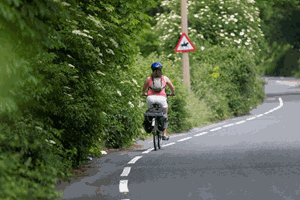
B
C
D
Correct Answer: B
Explanation: Cyclists often need to weave around potholes, and sometimes need to adjust their course to correct their balance. Allow them plenty of room when you overtake, and pay close attention to the road ahead, looking for farm entrances or driveways where vehicles might pull out.
Explanation: Cyclists often need to weave around potholes, and sometimes need to adjust their course to correct their balance. Allow them plenty of room when you overtake, and pay close attention to the road ahead, looking for farm entrances or driveways where vehicles might pull out.
Correct Answer: D
Explanation: Except in genuine emergencies, it is illegal to use a handheld mobile phone. Doing so will distract you from the road, and increase risk of an accident.
Explanation: Except in genuine emergencies, it is illegal to use a handheld mobile phone. Doing so will distract you from the road, and increase risk of an accident.
37. You're overtaking a motorcyclist in windy conditions. Why should you give them extra room?
Mark one answer
AB
C
D
Correct Answer: A
Explanation: Motorcyclists are more significantly affected by strong winds than larger, heavier vehicles. They could swerve or wobble as you pass them, so give them plenty of space as you overtake.
Explanation: Motorcyclists are more significantly affected by strong winds than larger, heavier vehicles. They could swerve or wobble as you pass them, so give them plenty of space as you overtake.
A
B
C
D
B
C
D
Correct Answer: C
Explanation: Signs above or beside the motorway will warn you of upcoming exits a mile before they appear. You'll only have around 50 second travelling at 60 mph before the exit then appears. You should ensure you're in the left-hand lane early to avoid any sudden movements nearer the junction, as these could cause an incident. You'll see a second sign when you're half a mile from the exit, then markers every 90 metres, starting when you're 270 metres from the exit.
Explanation: Signs above or beside the motorway will warn you of upcoming exits a mile before they appear. You'll only have around 50 second travelling at 60 mph before the exit then appears. You should ensure you're in the left-hand lane early to avoid any sudden movements nearer the junction, as these could cause an incident. You'll see a second sign when you're half a mile from the exit, then markers every 90 metres, starting when you're 270 metres from the exit.
Correct Answer: B
Explanation: Regular vehicle servicing can improve fuel consumption. Efficient engines produce fewer emissions and use less fuel, both reducing your impact on the environment and saving you money. Vehicle manufacturers usually provide servicing schedules, and keeping your car services according to these makes it more reliable and makes breakdowns less likely.
Explanation: Regular vehicle servicing can improve fuel consumption. Efficient engines produce fewer emissions and use less fuel, both reducing your impact on the environment and saving you money. Vehicle manufacturers usually provide servicing schedules, and keeping your car services according to these makes it more reliable and makes breakdowns less likely.
Correct Answer: B
Explanation: Engine braking occurs when you switch to a lower gear and the engine's natural resistance to turning (caused mainly by cylinder compression) slows the wheels. The engine is required to turn faster at lower gears, so there's more resistance than at higher gears, where the engine turns more slowly. Switching to a lower gear when going downhill will help control your vehicle's speed.
Explanation: Engine braking occurs when you switch to a lower gear and the engine's natural resistance to turning (caused mainly by cylinder compression) slows the wheels. The engine is required to turn faster at lower gears, so there's more resistance than at higher gears, where the engine turns more slowly. Switching to a lower gear when going downhill will help control your vehicle's speed.
Correct Answer: B
Explanation: You should not wear sunglasses while driving through tunnels, as they will restrict your vision in even well-lit tunnels. Remove your sunglasses before entering the tunnel, not after.
Explanation: You should not wear sunglasses while driving through tunnels, as they will restrict your vision in even well-lit tunnels. Remove your sunglasses before entering the tunnel, not after.
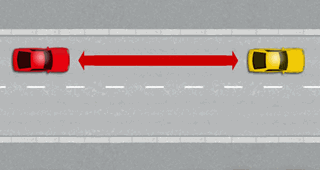
B
C
D
Correct Answer: A
Explanation: Use the two-second rule to judge if there's enough distance between you and the vehicle in front. Choose a stationary object by the road ahead, then say the following to yourself as the vehicle in front passes it: Only a fool breaks the two-second rule. If you can't complete the phrase before passing the object, you're too close and should drop back further.
Explanation: Use the two-second rule to judge if there's enough distance between you and the vehicle in front. Choose a stationary object by the road ahead, then say the following to yourself as the vehicle in front passes it: Only a fool breaks the two-second rule. If you can't complete the phrase before passing the object, you're too close and should drop back further.
Correct Answer: B
Explanation: On roads where there is no pavement, pedestrians should walk against the flow of traffic. You should be aware of this approaching bends on rural roads, giving yourself time to react if there are pedestrians around the corner.
Explanation: On roads where there is no pavement, pedestrians should walk against the flow of traffic. You should be aware of this approaching bends on rural roads, giving yourself time to react if there are pedestrians around the corner.
Correct Answer: B
Explanation: Motorway contraflow systems almost always come with reduced speed limits. You should slow down as soon as you see signs indicating a different speed limit, and be aware that the barrier between traffic flowing in different directions may not be as sturdy as usually found in a central reservation. Lanes may be narrower, traffic may be using the hard shoulder, and broken-down vehicles could obstruct lanes ahead.
Explanation: Motorway contraflow systems almost always come with reduced speed limits. You should slow down as soon as you see signs indicating a different speed limit, and be aware that the barrier between traffic flowing in different directions may not be as sturdy as usually found in a central reservation. Lanes may be narrower, traffic may be using the hard shoulder, and broken-down vehicles could obstruct lanes ahead.
Correct Answer: B
Explanation: Third-party insurance only covers damage and injury to others, and does not cover damage or injury to you or your vehicle. It is usually cheaper than comprehensive cover.
Explanation: Third-party insurance only covers damage and injury to others, and does not cover damage or injury to you or your vehicle. It is usually cheaper than comprehensive cover.
46. What should you do if your car catches fire in a tunnel, but is still driveable?
Mark one answer
AB
C
D
Correct Answer: A
Explanation: If it's possible to continue on without causing further danger, you should continue to drive out of the tunnel. Smoke gathers in tunnels, presenting risk of suffocation.
Explanation: If it's possible to continue on without causing further danger, you should continue to drive out of the tunnel. Smoke gathers in tunnels, presenting risk of suffocation.
47. What is a consequence of driving long distances in neutral (also called coasting)?
Mark one answer
AB
C
D
Correct Answer: A
Explanation: Going long distances in neutral or with the clutch depressed (known as coasting) reduces your control over the vehicle, as the engine can't supply power to the wheels to stabilise you through a corner, and engine braking isn't possible.
Explanation: Going long distances in neutral or with the clutch depressed (known as coasting) reduces your control over the vehicle, as the engine can't supply power to the wheels to stabilise you through a corner, and engine braking isn't possible.
48. What should you do if ill health impacts your driving after you've passed your practical exam?
Mark one answer
AB
C
D
Correct Answer: C
Explanation: If your health deteriorates and affects your ability to drive, you need to inform the DVLA (or DVA in Northern Ireland). After looking into your condition and situation, they will decide whether you are allowed to keep your licence.
Explanation: If your health deteriorates and affects your ability to drive, you need to inform the DVLA (or DVA in Northern Ireland). After looking into your condition and situation, they will decide whether you are allowed to keep your licence.
Correct Answer: C
Explanation: Use dipped headlights when daytime visibility is reduced to around 100 metres or less. Front and/or rear fog lights may help you see and be seen, but be sure to turn them off when visibility improves.
Explanation: Use dipped headlights when daytime visibility is reduced to around 100 metres or less. Front and/or rear fog lights may help you see and be seen, but be sure to turn them off when visibility improves.
50. Under which of these circumstances may a passenger travel without using a seat belt?
Mark one answer
AB
C
D
Correct Answer: D
Explanation: Passengers may only travel without a seat belt if they have a medical exemption. While adult passengers are responsible for their own wearing of a seat belt, you should ensure everyone in your vehicle who can use one does. You are responsible for ensuring anyone under 14 wears a seatbelt or child restraint.
Explanation: Passengers may only travel without a seat belt if they have a medical exemption. While adult passengers are responsible for their own wearing of a seat belt, you should ensure everyone in your vehicle who can use one does. You are responsible for ensuring anyone under 14 wears a seatbelt or child restraint.


